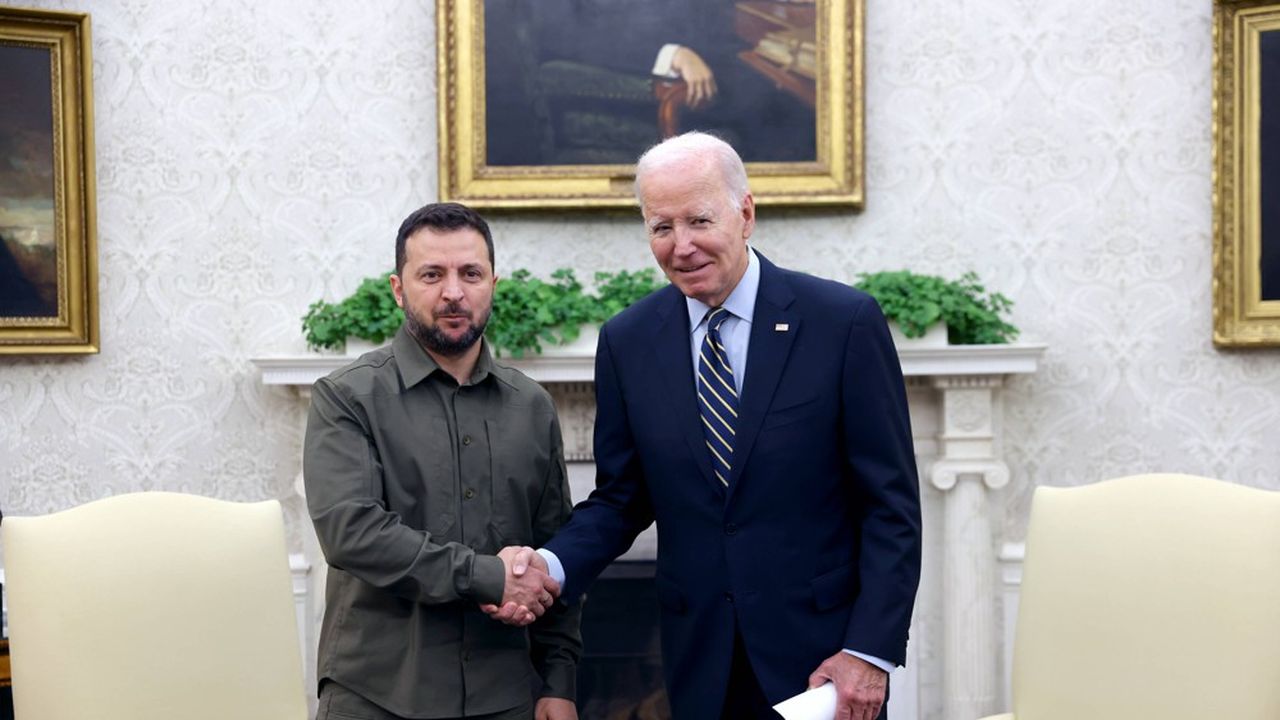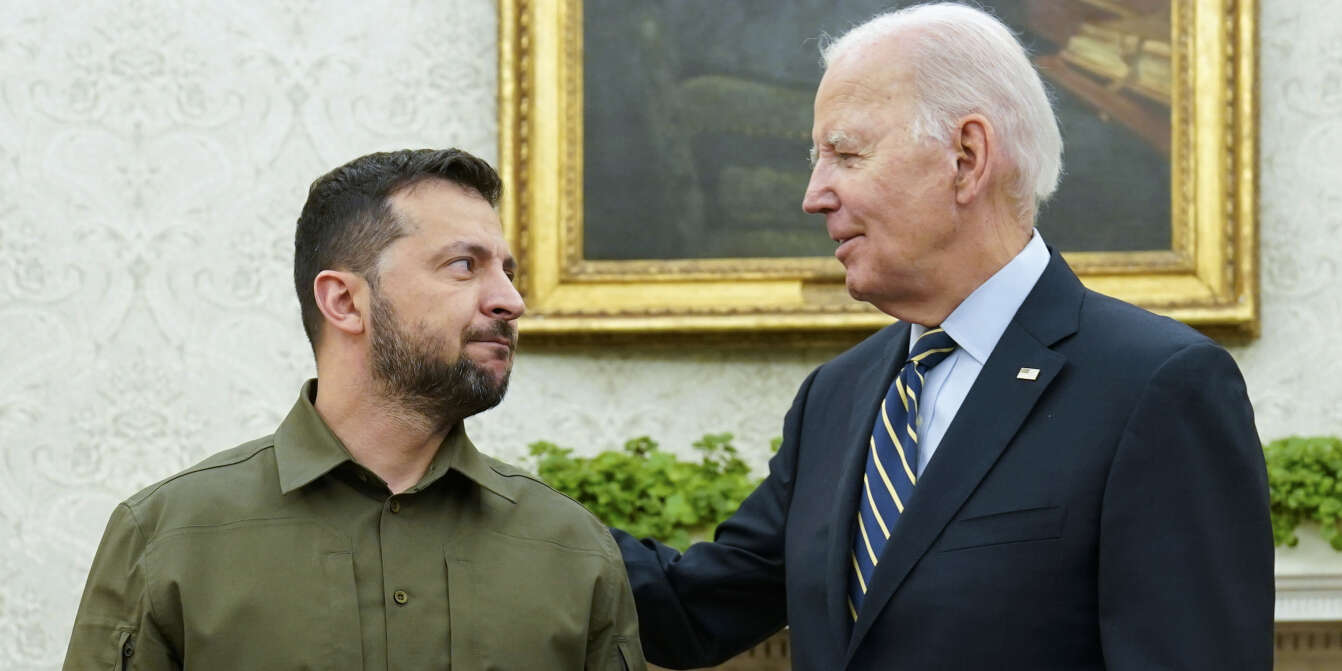As the war between Ukraine and Russia rages on, Ukrainian President Volodymyr Zelenskyy has intensified calls for the United States to provide his country with long-range missile capabilities to strike deep into Russian territory. Ahead of a crucial trip to Washington next week, where he will meet US President Joe Biden, Zelenskyy is preparing to present a comprehensive “victory plan” designed to end the conflict and solidify Ukraine’s security. The core of this plan involves targeted strikes inside Russia, a bold strategy that has sparked debate among international allies.
A “Victory Plan” and Long-Range Strikes
Zelenskyy’s upcoming visit to Washington will see him engage with Biden, Vice President Kamala Harris, and other top US officials, as well as deliver an address to the United Nations General Assembly. At the heart of his discussions will be his proposal for a decisive military push that involves using US-supplied weapons, including long-range missile systems, to strike targets deep within Russian territory. This tactic, according to Zelenskyy, is pivotal to bringing an end to the war on terms favorable to Ukraine.
Thus far, both the United States and the United Kingdom have been reluctant to allow the use of their weapons for strikes inside Russia. Washington, in particular, has voiced concerns about escalating the conflict and potentially provoking a direct confrontation between NATO and Russia. The UK, on the other hand, has been slightly more open, with Prime Minister Keir Starmer recently engaging in high-level talks with Biden on the issue, though no definitive agreement has been reached.
During a media briefing in Kyiv, Zelenskyy made it clear that international support for these long-range strikes remains limited. “Neither the US nor the UK has allowed us to use these weapons on the territory of Russia, against any targets and at any distance,” he said. Despite Ukraine’s continuous lobbying, the White House has yet to approve the use of these systems for offensive operations inside Russia.

Storm Shadows, Atacms, and Escalation Fears
Ukraine has been pushing for specific missile systems, including the British Storm Shadow cruise missiles, the French Scalp, and the American Army Tactical Missile System (ATACMS). These advanced systems would allow Ukrainian forces to strike deep into Russian territory, hitting critical military infrastructure, supply depots, and airfields. However, the reluctance from Ukraine’s Western partners, particularly the United States, stems from concerns about escalation.
The Biden administration has expressed fears that strikes inside Russia could widen the conflict, drawing NATO into a direct military confrontation with Moscow. The risk of Russian retaliation against NATO member states in Europe is a key factor in Washington’s hesitation. While the UK has shown more willingness to consider the use of Storm Shadow missiles, the political calculus in Washington has so far leaned toward caution.
Zelenskyy, however, has dismissed these fears of escalation, arguing that Ukraine is already facing the full force of Russia’s military might. He insists that targeted strikes within Russia are a necessary part of Ukraine’s strategy to neutralize key Russian capabilities and force Moscow to the negotiating table. “We need these weapons to protect our independence. The reluctance to provide them stems from a misunderstanding of the dynamics on the ground,” Zelenskyy said.
A Battle of Attrition
The security situation in eastern Ukraine remains critical. Russian forces continue to press their advantage with a combination of air and artillery strikes, followed by ground assaults. In recent months, Russia has increasingly relied on airdropped guided bombs, which have devastated Ukrainian defensive positions. After airstrikes weaken Ukrainian forces, Russian artillery “finishes off” the targets, allowing infantry units to seize territory. Zelenskyy noted that long-range weapons are essential to countering this multi-layered Russian assault strategy.
One of Ukraine’s recent military successes was an incursion into Russia’s Kursk oblast. Zelenskyy described this operation as a key strategic victory, forcing Russia to redeploy 42,000 troops from other frontline areas to counter the threat. This, in turn, prevented Moscow from launching its planned offensive into Ukraine’s Sumy province. Zelenskyy hinted that such operations could become more common if Ukraine gains access to long-range missile systems, which would enable Kyiv to carry out strikes that disrupt Russian military logistics and command structures deep inside Russian territory.
However, the battle for eastern Ukraine remains far from over. Ukrainian forces are locked in a war of attrition with Russian troops, particularly in the Donetsk and Luhansk regions. Without a decisive shift in military capabilities, Ukraine faces the prospect of a prolonged and bloody stalemate. Zelenskyy’s request for long-range missiles is, therefore, an attempt to break this deadlock and regain the initiative.
Zelenskyy’s visit to Washington is not just about securing military support; it is also about solidifying Ukraine’s position on the world stage. During his trip, he is expected to meet not only with Biden but also with former US President Donald Trump, who remains a key figure in US politics and a likely contender in the 2024 presidential election.
Trump’s position on Ukraine has been more ambiguous compared to Biden’s firm support for Kyiv. Trump’s running mate, JD Vance, has outlined a vision of a future US administration that could seek a more Moscow-friendly deal. This could involve freezing the conflict along current battle lines and preventing Ukraine from joining NATO. Zelenskyy is well aware of these political dynamics and the need to secure firm commitments from both the current and potential future US administrations.
The stakes are high for Zelenskyy, who views the Washington trip as a critical opportunity to influence US policy before Biden leaves office. Zelenskyy has framed the situation as a historic moment for Biden, suggesting that he could earn a place in history by making decisive moves to strengthen Ukraine’s position in the conflict. “Biden can strengthen Ukraine and make important decisions for Ukraine to protect its independence while he is still in office,” Zelenskyy said, framing the decision as part of Biden’s legacy.

Russia’s Response and Geopolitical Ramifications
Russia has been closely monitoring the discussions surrounding Ukraine’s potential acquisition of long-range missile systems. Anticipating the possibility of US or UK approval, the Kremlin has already relocated many of its aircraft to more remote airfields beyond the range of Ukraine’s current missile capabilities. This strategic repositioning underscores Russia’s concern about the threat posed by long-range strikes and its determination to mitigate their impact.
Moscow’s response to any future strikes inside Russian territory remains a significant concern for both Kyiv and its Western allies. The potential for retaliatory attacks on NATO member states or even a direct escalation of the conflict into a broader regional war cannot be dismissed. However, Zelenskyy has argued that the only way to end the conflict on favorable terms is to take the fight to Russia, forcing Moscow to negotiate from a position of weakness.
Internationally, the provision of long-range missile systems to Ukraine could have far-reaching consequences. It would signal a significant shift in the West’s approach to the conflict, potentially opening the door to a more aggressive Ukrainian strategy aimed at reclaiming occupied territories and pressuring Russia into a peace settlement. However, it could also lead to increased tensions between NATO and Russia, raising the specter of a broader conflict that could destabilize the entire region.
A Crucial Moment for Ukraine’s Future
As Zelenskyy prepares for his trip to Washington, the future of Ukraine’s war effort hangs in the balance. His call for long-range missile capabilities represents a bold and risky strategy to break the current deadlock and force Russia into negotiations. While the US and UK remain hesitant, the Ukrainian president is determined to make his case to Biden and other key decision-makers.
The outcome of these discussions could shape the trajectory of the conflict for months or even years to come. If Ukraine secures the weapons it seeks, it could launch a new phase of the war, with strikes deep inside Russian territory. If not, Ukraine may face a prolonged and bloody conflict with no clear end in sight. For Zelenskyy, the stakes could not be higher. His “victory plan” is not just about ending the war—it is about securing Ukraine’s future as an independent, sovereign nation.



